How to Care for a Pet Dwarf Hamster
Dwarf hamsters are simple to care for, requiring a fairly straightforward diet and regular cage cleaning. They are actually a number of tiny species of hamsters that are native primarily to desert regions around the world. These social little creatures differ from their larger, more territorial cousins, thriving in pairs or small groups as opposed to living alone. As pets, they are generally docile and easy to handle, as well as fun to watch as they tunnel and romp around in their enclosure.
Species Overview
Common Names: Dwarf hamster, Campbell hamster, Robo (Roborovski) hamster, Syrian hamster, black bear hamster, Chinese hamster
Scientific Names: Phodopus campbelli, Phodopus roborovskii, Cricetulus griseus
Adult Size: Around 2 inches long on average; weighs roughly 1 to 2 ounces
Lifespan: 3 years in captivity
Dwarf Hamster Behavior and Temperament
Dwarf hamsters comprise a number of species, and each has some specific personality traits. This includes:
- Campbell hamster: a curious little creature that's notably easy to handle
- Robo (or Roborovski) hamster: a particularly tiny dwarf hamster that weighs in at just over 3/4 ounce—stays asleep during the day more than other species
- Chinese hamster: not technically a dwarf species but just as small; known for their love of tunneling, especially through their bedding
- Russian dwarf hamster: also known as the winter white; friendly and sociable hamsters that come in a variety of colors
All hamsters are nocturnal, meaning they play and eat during the night and rest during the day, though some hamsters can adjust to their owners' sleeping and waking times. However, if you try to wake a sleeping hamster to handle him or her, the hamster might become grouchy and bite. In general, many hamsters will wake in the evening hours and happily interact with their humans then. Moreover, while hamsters make very soft and minimal vocalizations themselves, their movement during the nighttime can be an issue if you're trying to sleep. If you're a light sleeper, you probably shouldn't keep your hamster enclosure in your bedroom.
Most dwarf hamsters take well to people holding them, but they will nip if they feel uncomfortable. They don't necessarily need other hamster companions, but keeping them in same-sex pairs or small groups can help to make them feel more comfortable. They generally should be kept away from other pets, including other species of hamsters.
Size Information
Dwarf hamsters slightly range in size, depending on the species. On average, they reach around 2 inches long and weigh 1 to 2 ounces. They'll generally reach maturity at around 2 months old.
Housing
A dwarf hamster's habitat should be as large as possible, allowing for maximum exercise and play. A cage that's roughly a 2-foot square with a height of around a foot is the bare minimum that some animal groups recommend. Habitat options generally include a glass or plastic aquarium with a secure top that has ventilation or a cage that's wire with a plastic base. Wire cages allow for better airflow to prevent overheating, though they don't protect as well as plastic or glass do against drafts. You must make sure that the wire spacing is close enough that your hamster can't squeeze through the bars.
Include an exercise wheel in the enclosure that has a solid surface, not bars, for your hamster to run on. Also, provide plenty of wooden chew sticks or mineral chews in the enclosure. Chewing maintains a hamster's incisor teeth, which grow continuously. Plus, add a small nest or sleeping hut (available at most pet shops) for your hamster to rest and hide in when they want to feel secure.
Hamsters acclimate well to average household temperatures. Just be cautious of extreme temperature changes, and keep the habitat away from direct sunlight and drafts.
Specific Substrate Needs
On the bottom of the cage, there should be a 1- to 2-inch layer of bedding, such as chemical- and dye-free shredded paper or hardwood shavings. Change the bedding once a week when you clean all surfaces in the enclosure with soap and water, and remove wet spots daily.
Warning
Avoid cedar-based bedding, as it can be toxic to small animals.
What Do Dwarf Hamsters Eat & Drink?
A bowl of food and a small dish or bottle of fresh water should always be available to your pet dwarf hamster. Consult your veterinarian on the proper quantity to feed. In general, you should feed your hamster once per day, ideally in the evening when they are waking up and becoming active. Discard any uneaten food after 24 hours.
Look for commercial hamster foods specifically formulated for dwarf hamsters. This will provide your hamster with all the vitamins and minerals he or she needs. You can also offer limited amounts of certain seeds, grains, fruits, and vegetables, including oats, carrots, and greens. Supplemental food should only make up around 10% of your hamster's overall daily diet.
Keep sugary and high-fat foods to a minimum, and avoid toxic foods including macadamia nuts, avocados, and chocolate.

The Spruce / Kaley McKean
Common Health Problems
Dwarf hamsters are prone to a variety of health problems. This includes:
Skin issues
Hair loss and skin lesions can result from several different issues. The most common culprits include the animal rubbing on something in the enclosure or being attacked by a cage mate. Any skin abnormalities should be checked as soon as possible by a vet, as they can quickly become infected.
Digestive problems
Hamsters also are prone to digestive upset, which usually goes along with some type of infection of the digestive tract. Wet tail, a bacterial infection that causes diarrhea, sometimes results from stressful or unsanitary living conditions.
Diabetes
Some dwarf hamsters, especially Campbell's hamsters and Chinese hamsters, are prone to diabetes. However, this often can be prevented by keeping your pet's diet low in sugar and providing plenty of opportunities for exercise.
Overgrown teeth
While yellow teeth are normal on a hamster, sometimes their teeth can become overgrown, especially if they don't have enough chewable materials to wear them down. Overgrown teeth can affect a hamster's ability to eat, so they will likely have to be trimmed by a vet. The vet can then make sure you're doing everything possible to keep the teeth at a normal length.
Training Your Dwarf Hamster
Calm, gentle handling from a young age can help a hamster feel safe when held. It's best to sit on the ground in a secure space (such as a small bedroom with the door shut) when holding your hamster, as these animals can move quite quickly and might break free of your hold if you're not paying attention.
You don't ever want your hamster to drop from a great height—even a couple feet is a lot for them—as this can severely injure the little animal. It's also important never to squeeze your hamster in your hands, as this can result in injury for the animal or cause them to bite you.
Exercise
Providing an exercise wheel and a large enough enclosure should give the hamster what he or she needs to stay fit and prevent obesity and other health issues. There also are exercise balls for the hamster to roam around in outside of its enclosure. Make sure the ball is the proper size for a dwarf hamster, and always monitor the hamster when they are outside the enclosure.
Grooming
Hamsters are fairly clean animals that groom themselves. They do not need baths. But if they do get some dirt or debris stuck in their fur you can help them clean up by gently rubbing the spot with a damp cloth.
Upkeep Costs
Food and bedding will be your primary monthly costs for a dwarf hamster. Expect to pay around $20 to $40 per month, depending on what you feed and the type of bedding you use (plus how big the habitat is). You'll also have to periodically replace chew sticks and nests, which cost around $10 on average. Moreover, be sure to budget for an annual veterinary wellness checkup and any emergency care.
Pros & Cons of Keeping a Dwarf Hamster as a Pet
Dwarf hamsters are fairly easy pets to keep. They don't take up a lot of space, are relatively quiet, and are fun and interesting to watch. However, they are nocturnal, so they might not be very active while you're awake and they could keep you up at night. Also, they are rather fragile animals that must be handled gently.
Similar Rodents to the Dwarf Hamster
If you’re interested in dwarf hamsters, check out:
- Mouse
- Rat
- Gerbil
Otherwise, check out these other exotic animals to find your next pet.
Purchasing or Adopting Your Dwarf Hamster
If you plan to purchase a hamster at a pet store, expect to pay around $20, though this can vary based on factors such as the animal's age and tameness. Also, observe the animals closely to make sure they are being kept in sanitary conditions.
It's best to acquire a dwarf hamster from a responsible breeder or rescue organization where you are most likely to get accurate information about the animal's origin and health history. There are rescue groups dedicated specifically to small animals like dwarf hamsters, and general animal shelters also might have them for adoption from time to time.
Reproduction/Breeding
A local exotic veterinarian might be able to point you in the direction of a good breeder. Look for a breeder that lets you visit with the animals before taking one home. Try to find an animal that is active and alert. But remember if you're observing the animal during normal sleep hours, theymight be a little groggy. Still, they should have clear eyes and clean fur, and any droppings should be well-formed. Any eye or nasal discharge, as well as labored breathing, are signs of a potential health issue.
To avoid accidentally becoming a breeder yourself, either house your hamsters individually or in same-sex groups.
- Are dwarf hamsters a good pet?
Dwarf hamsters make good pets as they are friendly and docile. They can also make good pets for older children who are able to handle these small, quick, fragile, and easily spooked animals with care.
Are dwarf hamsters hard to take care of?Dwarf hamsters are fairly low-maintenance. Feeding them daily and keeping their habitat clean are typically their two primary care needs.
Do dwarf hamsters like to be held?Dwarf hamsters can learn to be comfortable with calm, gentle handling.
Is it better to have two dwarf hamsters or just one?Since dwarf hamsters are so friendly, they do best with a companion or in a small group.
RECOMMENDED NEWS
 exotic-pets
exotic-petsHow to Care for a Pet Pink Toe Tarantula
The pink toe tarantula, sometimes referred to as the South American pinktoe or the Guyana pinktoe, ...
Read More → ferrets
ferretsWhy Do Ferrets Stink?
Ferrets are popular pets, but many people note that they have a distinct odor to them. This musky s...
Read More → ferrets
ferretsThe Different Types of Domesticated Ferrets
When it comes to domesticated pet ferrets (not to be confused with wild European polecats or North ...
Read More → rats
ratsRat Personality, Intelligence, and Care
While rodents may scare some people and get a bad reputation, rats are extremely intelligent animal...
Read More → rats
ratsHow to Care for a Pet Rat
Rats are smart and friendly, and they like to cuddle. They make great companion animals, including ...
Read More → guinea-pigs
guinea-pigsGuinea Pig Heat Cycles
Female guinea pigs have a uterus, like every other female mammal, that hasn't been surgically alter...
Read More → rabbits
rabbitsShould You Keep a Capuchin Monkey as a Pet?
Capuchin monkeys are energetic animals that require enrichment and an active lifestyle—often, whe...
Read More → exotic-pets
exotic-petsList of Aquarium Fish Species by Common Name
A complete alphabetical listing of all the fish species in the world would have at least 30,000 ite...
Read More → exotic-pets
exotic-petsWhat Fruits Do Hermit Crabs Eat?
What do hermit crabs eat? In the wild, hermit crabs are not fussy eaters so they eat a wide variety...
Read More →
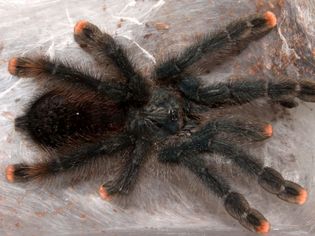
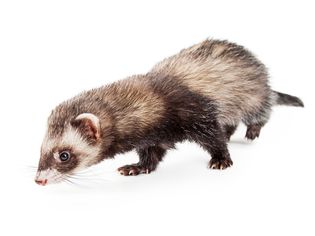
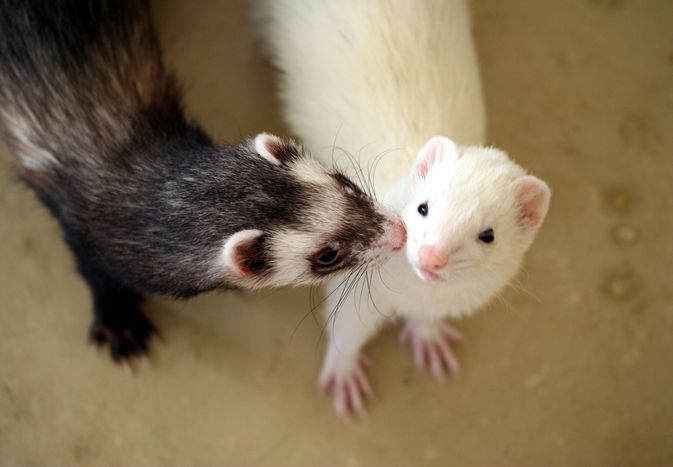
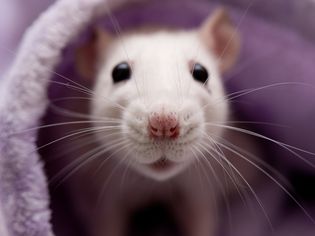
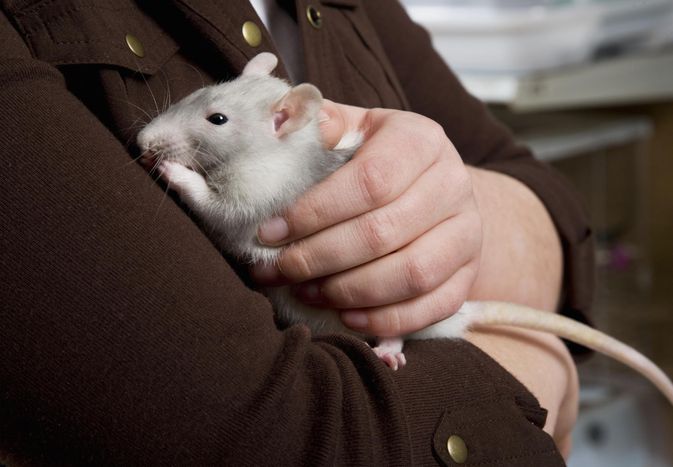
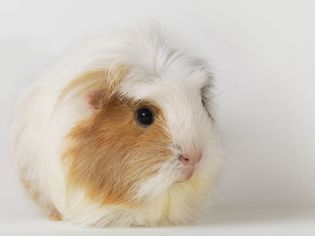



Comments on "How to Care for a Pet Dwarf Hamster" :